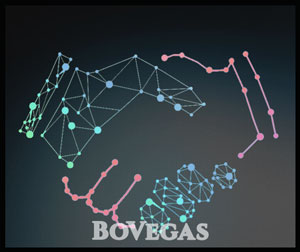



While the whole cryptocurrency gambling thing still seems suspicious even for seasoned gamblers, cryptocurrency pyramid schemes look even worse. The FoMo3D game, based on Ethereum (the second-biggest cryptocurrency in the world), looks like an ice-cream van with a rather too jolly and richly mustached vendor. The reason for this feeling is that we’ve probably evolved to have a natural distrust for such schemes. Buy a token and get a portion from each token bought afterward – that’s what the pyramid scheme (aka Ponzi scheme) is. Ponzi stands for Charles Ponzi, a swindler, who used this scheme in the US at the beginning of the 20th century.
FoMo3D also promises high returns for earlier investors, but there is a difference: the game is based on blockchain technology, which makes it 100% fair. Another evidence of its fairness is that it recently paid out $2.8 million in ETH digital currency. Not as convincing as a smart contract thing; but still pretty nice, right? Let’s get to the bottom of this and find out how it works.
In the beginning was Ethereum, and then came TeamJUST with their Ponzi scheme idea. They’ve taken an old scam idea and evolved it into a brand new kind of lottery, based on smart contracts. To move further, we have to explain what a smart contract is.

Initially, PoWH (proof of weak hands) started out as a Ponzi scheme, or at least that’s what its creators have told us. In fact, it was quite an elegant social experiment, allowing us all to see how much influence greed has on us in both regular life and business. The scheme goes like this:
The whole point of PoWH was to prove that the scheme is capable of going forever, given that everyone trusts in its fairness. Those who are in possession of weak, sweaty handies will sell tokens eventually, and the ones with strong hairy arms will buy them and hold them forever. The token price rises, people buy more, then some major players see that they’ve reached their estimate profit level and decide to sell out. This causes a cascade effect, people start selling more tokens to cash out what they have until it’s worth something, and it goes like this up to the point when some investors decide that the current price is quite attractive and start buying tokens. Most probably, they will be exactly the ones who have initially launched the downfall.
The difference between this scheme and the real market is that in reality, prices go up and down depending on the demand and supply ratio, while in PoWH they’re predetermined to change. When PoWH failed due to an error in its code, TeamJUST came up with another project, called PoWH3D, where the mistakes of its predecessor were taken into account, and the ponziness of the scheme was forfeited. Here are the most important improvements:
And now we’re slowly rolling towards the last Ethereum adventure of this sort: FoMo3D.
FoMo3D (fear of missing out) game is based on PoWH3D and operates on its tokens, which means that all tokens bought in FoMo3D pay a percentage to PoWH3D token holders. As for the other parts – it’s even more interesting.
There is a prize pool, and each coin bought adds a fraction of its cost to it. What’s left is being distributed among the token holders. There is a 24-hour countdown, and each key bought adds a certain time to it. When the clock runs out, the one who has purchased the last full key gets half of the prize. The other half is being distributed among the other holders and the owners of the game. While you hold the tokens, you receive a passive income from all transactions made, and when the round is finished, you also get your piece of the pie.
At first, the game was immensely popular, and the countdown was running wild; but when the price of the key increased, more and more players decided just to hold their keys and wait, buying some more from time to time. Many players chose to play the game on a merchant basis, and created bots to automatically buy keys when the countdown reaches zero. And that’s how and why the first round ended.
Though the bot-based strategies are quite attractive for those who want to get the big prize in FoMo3D, they have certain drawbacks. One of those was exploited to trick the system and get the $2.8 million (10,469 ETH) payout. It was really smart and extremely risky, but the guy did it, and we’re happy for him.
If you own a bot that buys keys on a daily basis, you want them to be cheap; and one of the ways to achieve it is to minimize the blockchain transaction cost (AKA gas). The trick is that the more gas you’re willing to pay, the faster your transaction gets processed. The winner understood that, made some calculations, and decided to perform a scheme that can be considered a sort of a DDoS attack on major ETH nodes. He performed several transactions through the most popular nodes that his bot-opponents were using and put the gas to the max, thus reaching the maximum gas allowed for each block. These transactions ensured that the bots, paying relatively low fees, will be ignored in favor of the high-paying transactions.
It required a lot of time and effort, not to speak of a large sum of money (40-50 ETH or $11,000-14,000 approximately) to test this strategy and bring it to life. Another difficulty was to pick a time when there were no live players active because their gas couldn’t be estimated as easily. With some bad luck, the current winner could’ve jammed the system for someone else, but he got lucky enough to take three million to his vault! Even the game developers admitted that the winner (or winners) have absolutely outskilled everyone else playing.
The second round had started immediately after the first one ended, and the current prize pool is 1,400 ETH at the time of writing. Regardless of the second round’s outcome, Fomo3d had already shaken the whole cryptocurrency community and became immensely popular among all crypto-investors. You may say that the winner tricked the system; but in fact, what he did was a reminder for those who prefer automatic solutions: don’t rely on bots! If you’re thinking about investing in FoMo3D – it’s still a very questionable investment, but we’re sure that it’s fair, and its creators play by the rules.

Have you ever wondered how to bet faster, more efficiently, and at any time, day or night? If so, you’ve probably heard about certain automated programs called gambling bots. The latter are a kind of software which uses specific algorithms, in order to interact with websites APIs and place bets without human input. These innovative […]
Slot machines have always been pretty popular, but their audience has skyrocketed over the past few decades. Nowadays, slot games represent the biggest segment of the world’s gaming industry in terms of their turnover, number of players, number of games offered and even in terms of casino revenue per square foot. But if online casinos […]
A significant part of Australians are risk-takers: gambling losses per adult are more than twice as much as those in America. Gambling was an integral part of the local culture back in colonial times. Nowadays, casino customers exceed the Sydney Opera House visitors; they mostly enjoy wagering real money in pokies (slot machines), racing, and […]
Posh apartments, luxury restaurants (and no doubt a huge number of gaming machines) are integral parts of any prominent casino in the US. Such gambling venues are constantly seeking to expand, to extend their territories and to add new features. Sometimes their vastness and elegance are so astonishing that it becomes difficult to resist visiting […]
If you love gambling and have been to a land-based casino at least once, you may have thought about becoming a dealer. Playing the same game but from the opposite side, while communicating with other players, sounds like a dream job, right? A dealer is a straightforward job, and you will be the heart and […]
On Monday September 14, MGM announced that it plans to open its first smoke-free casino at the end of September, when Park MGM will finally reopen its venues to players and tourists. The resort comprises around 2,990 rooms and various restaurants, and it’s set to be reopened on September 30. The venue has been closed […]
Online gambling has undoubtedly taken a place of true supremacy over the casino industry during the pandemic. And the reason for that is quite clear: online casinos are more accessible, and you can always count on some encouragement from the casino administration to help you boost your game. However, this digital revolution has only been […]
The large selection of online gambling sites out there can make players somewhat puzzled, and give them a feeling of uncertainty about making the right choice of casino. Each online gambling venue offers its own conditions, games, and various bonuses, of course; but the most important thing is the reliability of the casino and the […]